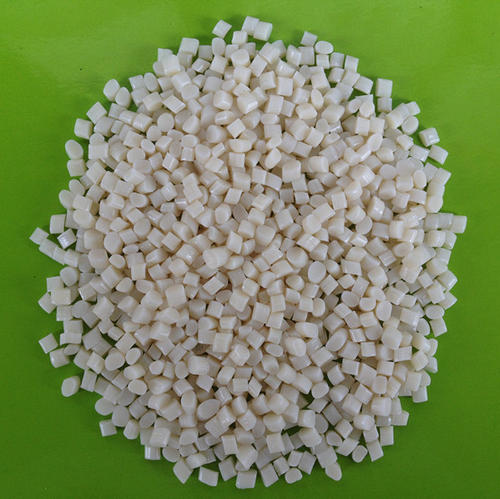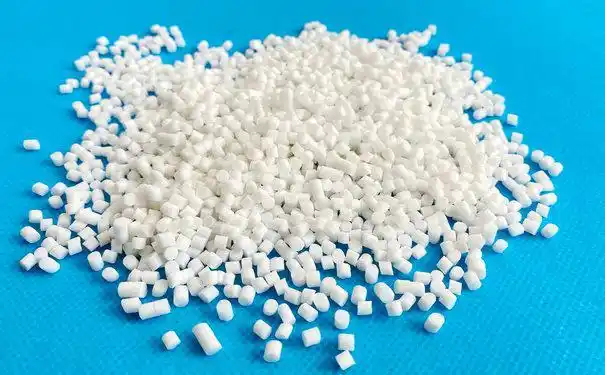As a materials engineer who’s spent over a decade helping companies navigate the world of polymers, I’ve often been asked to clarify the differences between materials like silicone and TPR (Thermoplastic Rubber). This question pops up a lot, especially among product designers and manufacturers looking for the right material for everything from kitchen gadgets to medical devices. The confusion makes sense—both silicone and TPR are flexible, durable, and have a rubbery feel, so it’s easy to wonder if they’re the same. But having worked on projects across industries, from consumer goods to industrial applications, I can tell you they’re distinctly different materials with unique strengths and weaknesses. In this article, I’ll break down what silicone and TPR are, compare their properties, and share practical advice to help you choose the right one for your needs. Let’s clear up the confusion and get you on the right track.

Why Do People Mix Up Silicone and TPR?
The question of whether silicone is the same as TPR often stems from their shared characteristics: both are soft, flexible, and resilient, making them popular for similar applications like seals, grips, and cookware. In my work, I’ve seen clients assume they’re interchangeable because they look and feel similar in products like phone cases or baking molds. But silicone is a thermoset elastomer with a unique chemical structure, while TPR is a thermoplastic elastomer designed for different performance and processing needs. Understanding their differences is key to picking the right material, so let’s dive into the details with insights from my hands-on experience.
What Is Silicone?
Silicone is a synthetic polymer known for its versatility and durability, widely used in applications requiring heat resistance, flexibility, and biocompatibility. I’ve recommended silicone for countless projects due to its exceptional performance. Here’s what defines it:
Composition: Silicone is made from siloxane (silicon-oxygen) chains, often reinforced with fillers like silica. Its inorganic backbone gives it unique stability compared to carbon-based polymers like TPR.
Properties: Silicone is heat-resistant (up to 200-250°C), cold-resistant (down to -60°C), chemically inert, and UV-resistant. It’s also non-toxic and biocompatible, making it ideal for medical and food-contact uses.
Processing: As a thermoset, silicone requires curing (e.g., heat or chemical vulcanization) to set its shape, which is permanent. It can be molded, extruded, or cast, but it’s not recyclable like thermoplastics.
Applications: I’ve seen silicone in kitchen tools (e.g., spatulas, baking mats), medical tubing, seals, gaskets, and wearable devices due to its safety and durability.
For example, I once advised a kitchenware company to use silicone for their baking molds because it could withstand oven temperatures and was easy to clean, ensuring customer satisfaction.

What Is TPR?
TPR, or Thermoplastic Rubber, is a type of thermoplastic elastomer (TPE) that combines the elasticity of rubber with the melt-processability of plastics. It’s a go-to material in many of my projects for its affordability and versatility. Here’s a closer look:
Composition: TPR is typically based on styrene-butadiene-styrene (SBS) or styrene-ethylene-butylene-styrene (SEBS), blended with additives like oils or fillers to enhance flexibility and softness.
Properties: TPR is soft, stretchy, and recyclable, with a rubber-like texture. It has moderate heat resistance (softens above 80-100°C) and limited chemical resistance compared to silicone.
Processing: As a thermoplastic, TPR can be injection-molded, extruded, or blow-molded without curing, making it cost-effective for mass production. It can also be remelted and recycled.
Applications: I’ve worked with TPR in shoe soles, tool grips, toys, phone cases, and medical tubing (non-critical applications) due to its low cost and comfortable feel.
In one project, I helped a toy manufacturer use TPR for flexible action figures because it was easy to mold and budget-friendly, meeting their production goals.
Key Differences Between Silicone and TPR
To answer whether silicone is the same as TPR, let’s compare their properties and performance based on my experience:
Chemical Structure:
Silicone has a siloxane backbone, making it inorganic and highly stable against heat, UV, and chemicals.
TPR is a carbon-based polymer (SBS or SEBS), which is less stable but easier to process and recycle.
Heat Resistance:
Silicone withstands 200-250°C, ideal for oven-safe or sterilization applications.
TPR softens above 80-100°C, limiting it to room-temperature or mild-heat uses. I’ve seen TPR deform in hot environments where silicone holds up.
Processing:
Silicone requires curing, which is time-consuming and irreversible, increasing production costs.
TPR is melt-processable, allowing faster production and recyclability, which I’ve leveraged for high-volume projects.

Cost:
Silicone costs $10-$50/kg, reflecting its premium performance.
TPR is $2-$5/kg, making it a budget-friendly option for mass-produced goods.
In a medical device project, I chose silicone for a catheter because it was biocompatible and sterilizable, while TPR was better suited for the device’s non-critical grips due to its lower cost.
Comparison Table: Silicone vs. TPR
Here’s a table summarizing the differences and best uses for silicone and TPR:
| Factor | Silicone | TPR | Best Choice For |
|---|---|---|---|
| Composition | Siloxane-based, inorganic | SBS/SEBS-based, organic | Silicone for stability |
| Heat Resistance | Up to 200-250°C | Up to 80-100°C | Silicone for high heat |
| Processing | Cured, non-recyclable | Melt-processable, recyclable | TPR for easy production |
| Cost | $10-$50/kg | $2-$5/kg | TPR for budget projects |
Similarities Between Silicone and TPR
Despite their differences, silicone and TPR share some traits that contribute to the confusion:
Flexibility: Both are soft and elastic, ideal for grips, seals, or wearables. I’ve used both for products needing a rubber-like feel.
Versatility: Both are used in consumer goods, medical, and industrial applications due to their customizable properties.
Tactile Appeal: Both offer a comfortable, soft-touch surface, popular in kitchen tools or phone cases.
Durability: Both resist impact and wear in mild conditions, though silicone lasts longer in harsh environments.
These similarities explain why silicone and TPR are sometimes mistaken for each other, but their performance in extreme conditions sets them apart.

Practical Applications: When to Use Silicone vs. TPR
Choosing between silicone and TPR depends on your project’s requirements. Here’s how I guide clients based on real-world scenarios:
When to Use Silicone:
High-Heat Environments: Silicone is perfect for oven-safe kitchenware, sterilizable medical devices, or industrial seals exposed to heat. I recommended silicone for a baking tray that needed to withstand 200°C.
Chemical or UV Exposure: Silicone’s inertness makes it ideal for outdoor seals or chemical-resistant tubing.
Biocompatibility: For food-contact or medical applications, silicone’s non-toxic nature is a must.
Long-Term Durability: Silicone lasts longer in harsh conditions, like marine gaskets or wearable sensors.
When to Use TPR:
Budget-Friendly Products: TPR is great for mass-produced items like toys, phone cases, or basic shoe soles due to its low cost.
Soft-Touch Applications: Its grippy feel suits tool handles or fitness bands. I used TPR for a budget-friendly yoga mat grip.
Recyclability: TPR’s melt-processable nature appeals to eco-conscious manufacturers.
Quick Production: TPR’s easy molding speeds up manufacturing for tight deadlines.
In one case, I helped a startup choose TPR for their phone case line because it was affordable and moldable into trendy designs. For a different client needing a sterilizable surgical tool, silicone was the only option due to its heat resistance and safety.

My Experience: Navigating Silicone vs. TPR
A few years ago, I consulted for a company making reusable water bottle lids. They initially used TPR for the lid’s seal, thinking it was similar to silicone. But users reported leaks after dishwashing, as the TPR softened at high temperatures. After testing, we switched to silicone, which held its shape and seal integrity even after repeated hot washes. The product’s reliability improved, and the company gained a loyal customer base. In contrast, for a line of budget-friendly tool grips, we stuck with TPR because it was cost-effective and didn’t face heat exposure. These experiences taught me that application-specific requirements drive the choice between silicone and TPR.
How to Choose Between Silicone and TPR
Based on my work with manufacturers, here’s a practical guide to deciding between silicone and TPR:
Evaluate Temperature Needs: If your product faces high heat (e.g., ovens, sterilizers), choose silicone. For room-temperature uses, TPR is fine.
Consider Chemical Exposure: Silicone resists chemicals, UV, and weathering, while TPR is better for mild environments.
Assess Budget: TPR is cheaper, ideal for high-volume, low-cost products. Silicone is worth the cost for premium or specialized applications.
Check Processing Requirements: TPR is faster and recyclable, while silicone requires curing, increasing production time.
Test for Safety: For food or medical uses, ensure silicone is FDA-compliant; TPR may need certification for similar applications.
I always recommend prototyping with both materials to compare performance in your specific use case.

Maintenance and Care Tips
To maximize the performance of silicone or TPR, follow these tips from my experience:
Silicone:
Clean with soap and water or place in a dishwasher; it’s heat-resistant and non-reactive.
Store away from sharp objects to avoid tears, as silicone can be prone to cuts.
Inspect for stickiness or discoloration, though this is rare with high-quality silicone.
TPR:
Avoid high heat (above 80°C) to prevent softening or deformation.
Clean with a damp cloth and mild soap; avoid solvents that can degrade TPR.
Store in a cool, dry place to maintain elasticity and prevent UV damage.
A Personal Story: Solving a Material Mix-Up
Last summer, I worked with a small business producing baby bottle nipples. They used TPR, assuming it was as safe and durable as silicone. After parents reported the nipples deforming in sterilizers, I explained that TPR couldn’t handle boiling water or steam. We switched to food-grade silicone, which was heat-resistant and biocompatible, ensuring safety and durability. The company updated their product line, and sales soared as parents trusted the new nipples. This experience reinforced the importance of choosing silicone for high-stakes applications and TPR for cost-driven ones.

Conclusion: Silicone and TPR Are Not the Same
To sum up, silicone is a thermoset elastomer with superior heat resistance, chemical stability, and biocompatibility, making it ideal for high-heat, medical, or food-contact applications. TPR, a thermoplastic elastomer, offers affordable, recyclable, and easy-to-process solutions for budget-friendly products like grips or soles, but it’s less suited for extreme conditions. By assessing your project’s temperature, safety, and budget needs, you can pick the right material. If you’re unsure whether silicone or TPR is best for your application, share your project details in the comments, and I’ll guide you to the perfect choice!
Related Q&A
Q1: Can TPR be used instead of silicone for kitchenware?
A: TPR isn’t ideal for oven-safe or high-heat kitchenware due to its low heat resistance (80-100°C). Silicone is better for baking or sterilization.
Q2: Is silicone more eco-friendly than TPR?
A: TPR is recyclable, while silicone is not, but silicone’s longevity reduces waste. Both can be eco-friendly depending on use and disposal.
Q3: How do I tell if a product is silicone or TPR?
A: Silicone resists high heat and feels smoother; TPR softens when heated and may feel stickier. Check the material data sheet or test with a flame (silicone burns to white ash, TPR melts).
Q4: Is silicone safer than TPR for medical or food use?
A: Silicone is generally safer due to its biocompatibility and FDA approval for food and medical applications. TPR needs specific certifications for similar uses.





